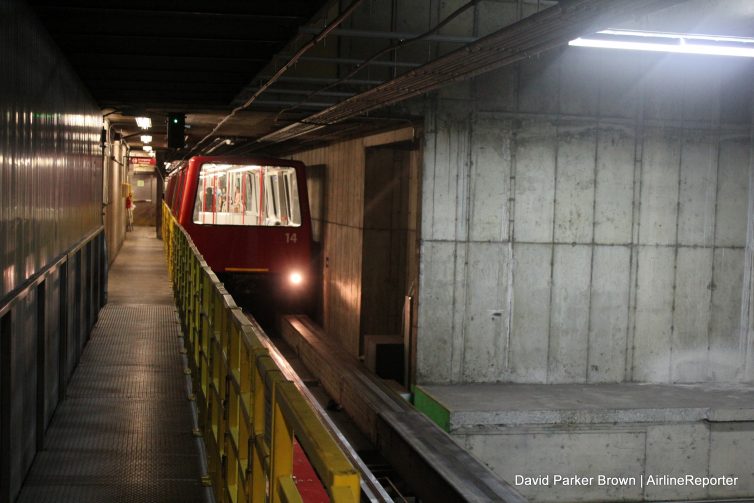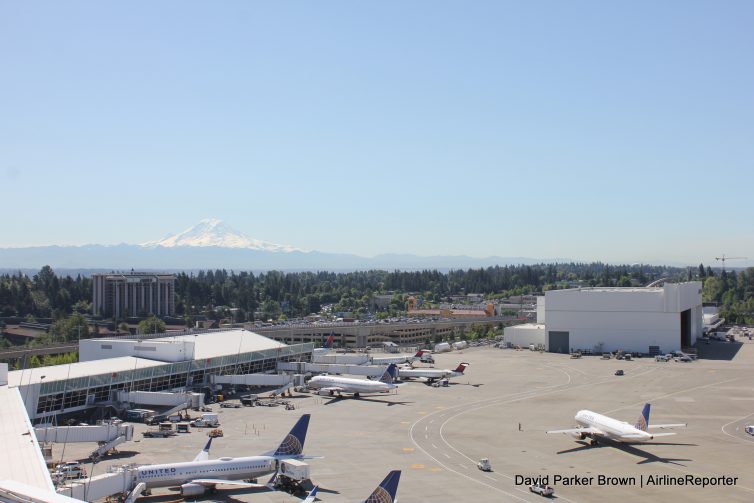
Below ground, one of the trains arrives at SEA
The Seattle-Tacoma International Airport (SEA) has been my home airport most of my life. I have seen the many changes over the years and I am proud to call it mine. Growing up, I lived in Oak Harbor, WA (about 90min northwest of Seattle) and I would often fly by myself from there to Reno, NV (where my dad lived). After I was 12, I didn’t need to be escorted and I would usually have a few hours of layover from my tiny home airport (ODW) to SEA. To burn time, I would often ride one of the satellite trains to the remote terminals and watch the airplanes come and go. Being a kid, sometimes I would just ride the train a few laps for fun.

Above ground, Mount Rainier in the background at SEA
Throughout the years, I always wondered how they worked. I knew there wasn’t a person controlling them, but how were they programmed? How many cars were there? How did they get fixed? And how fast can they go? Luckily adult-me was in a position to find those answers, so I reached out to SEA to get a behind-the-scenes tour of their train operations. Once again, the adult-me was making the child-me jealous.